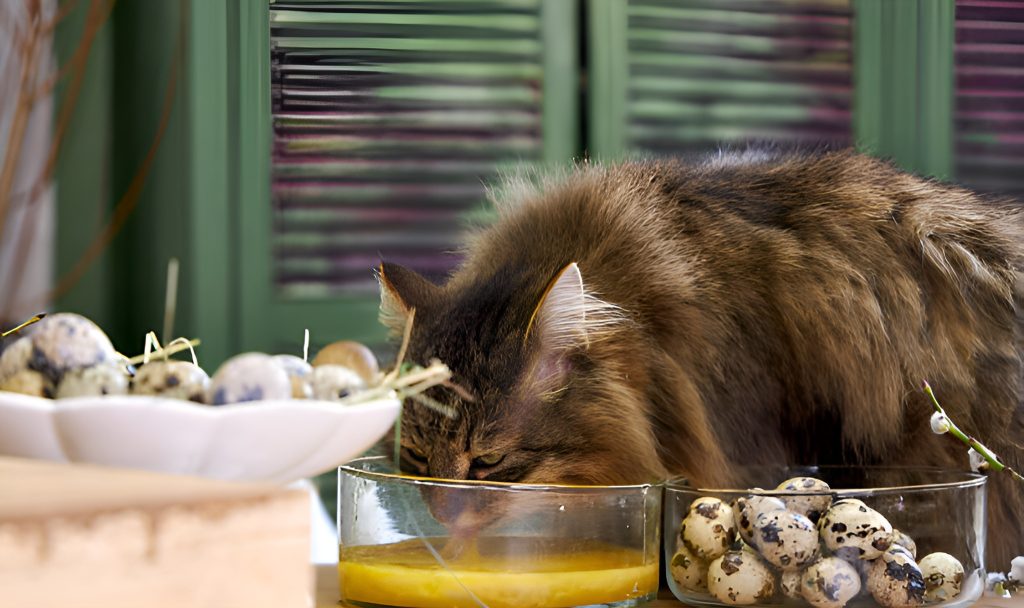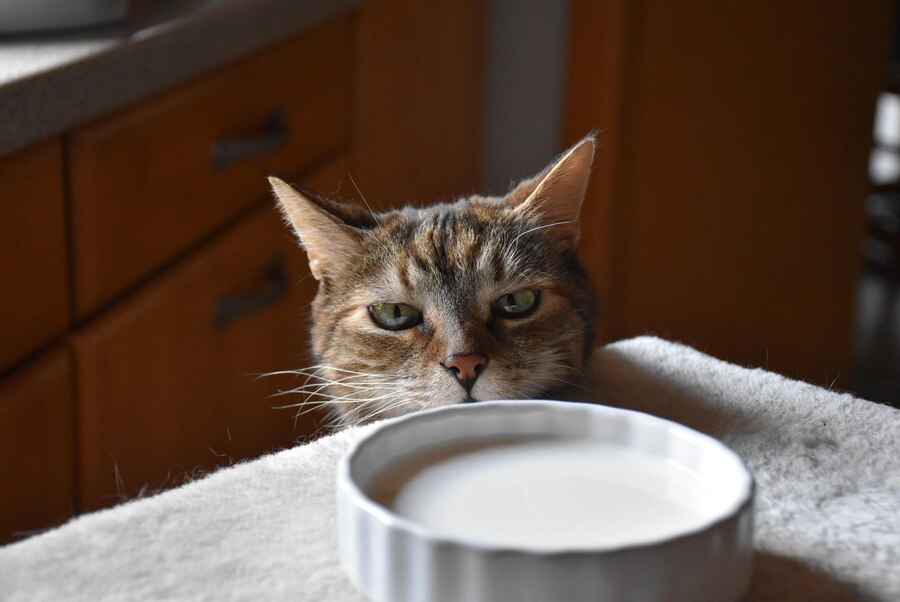Feeding your Ragdoll is more than just filling a bowl—it’s a lifelong commitment to their health, beauty, and happiness. This gentle, large breed has a slower metabolism, making them prone to weight gain if overfed.
Their big frames need plenty of lean protein to stay strong, but calories still count. The right diet can help prevent breed‑specific issues like heart disease (HCM), keep their silky coat in show-worthy condition, and support sensitive digestion.
Choosing the best food for your Ragdoll isn’t guesswork—it’s a mix of smart choices and daily care. This guide walks you through a feeding strategy designed for your cat’s unique needs.
Understanding the Ragdoll Cat’s Nutritional Needs
Ragdolls aren’t just big—they’re large‑framed cats with a slow metabolism and unique dietary needs. They thrive on high‑quality animal protein (30–40% for adults, 35–45% for kittens) to maintain muscle, along with healthy fats like omega‑3s for a silky coat and joint support. Keep carbs low—under 15%—to help prevent unnecessary weight gain.
Choose AAFCO‑approved diets that include taurine, fiber, and balanced omega ratios.
Before getting swept up in “grain‑free” trends, focus on what truly matters: the actual ingredients, not the marketing. The right diet fuels health, beauty, and longevity—feed your Ragdoll like the luxury feline they are. Now that you know which nutrients matter, let’s explore the types of food that deliver them best.
Wet vs. Dry vs. Raw
Choosing the right diet for your Ragdoll isn’t one-size-fits-all—it depends on hydration needs, lifestyle, and any health sensitivities.
Wet food offers 70–80% moisture, making it great for urinary and kidney health. It’s also appealing to picky eaters, especially in textures like chunky pâté or shredded meats.
Dry food is convenient and budget-friendly but low in moisture, so portions must be measured carefully to avoid weight gain, especially for laid-back indoor cats.
Raw diets, if properly balanced and vet-approved, may support coat condition and digestion. But they require strict handling, gradual introduction, and close monitoring. Always consult your vet before starting raw.
Many Ragdoll owners find success with a mix—primarily wet food, with measured dry kibble and occasional safe raw additions. Whatever you choose, focus on quality, balance, and how your cat responds.
You Might Also Like
Ragdoll Diet by Life Stage
Your Ragdoll’s nutritional needs change dramatically from kittenhood to their senior years, and feeding them correctly at each stage can add years to their life and keep them thriving. Unlike most cats, Ragdolls mature slowly—often taking up to 3–4 years to fully grow—so their feeding schedule and nutrient balance need to evolve with them.
Here’s how to tailor your Ragdoll’s diet for every stage of life while supporting their size, gentle temperament, and long-term health.
Kitten (0–12 Months)
Ragdoll kittens grow steadily and need high-protein, high-fat diets to fuel muscle, bone, and brain development. Wet food should be the base for hydration, with small amounts of quality dry kibble for grazing.
Feed 3–4 small meals a day, ensuring DHA for brain development and proper calcium/phosphorus ratios for bone growth. Switch to adult food around 12–14 months, once your kitten looks strong and muscular.
Adult (1–7 Years)
Adult Ragdolls have a slower metabolism and lower activity level, so portion control is key. Prioritize high-quality wet food for hydration and satiety, with measured dry portions if needed for convenience.
Focus on lean animal proteins, moderate fats, and minimal fillers to prevent weight gain. Adjust calories based on body condition and activity rather than a one-size-fits-all chart.
Senior (7+ Years)
As Ragdolls age, digestion slows, and joint health becomes a priority. Choose senior formulas with highly digestible protein, lower fat, and added joint support nutrients like glucosamine and chondroitin.
Antioxidants help protect brain function, while slightly warming food can boost appetite. Monitor closely for muscle loss, weight changes, or reluctance to eat, and adapt their diet promptly to maintain comfort and vitality.
You Might Also Like
How Much to Feed Your Ragdoll & How Often
Ragdolls may look lean under all that fur, but their calm nature makes them prone to silent weight gain, especially if free-fed. Portion control is key for this breed.
A kitchen scale is your friend—it takes the guesswork out of calorie tracking by life stage and activity level. Kittens thrive on 3–4 small meals daily; adults do best with two scheduled meals; seniors benefit from 2–3 smaller portions to support digestion.
Avoid leaving food out all day—structured feeding helps maintain a healthy weight and steady digestion. If your Ragdoll still seems hungry, try adding moisture-rich wet food or using puzzle feeders for slower, more satisfying meals.
Special Dietary Considerations
Ragdolls’ gentle temperament, long coat, and indoor lifestyle make them prone to a few dietary challenges. Sensitive stomachs often respond best to limited‑ingredient or novel protein diets, like duck, rabbit, or venison, introduced gradually and paired with probiotics.
Their plush fur means hairballs are common—adding about 2–4 grams of fiber daily and including omega‑3s can help manage them.
Keep an eye out for patterns in vomiting, stool changes, or weight gain. If your cat vomits hairballs more than once a week, or you notice other changes, it could be a sign that their diet needs an adjustment. The right nutrition now can help prevent bigger health problems down the road.
Safe Human Foods & Treats
Ragdolls can enjoy a few human foods as occasional treats—just keep moderation in mind. Safe options include plain, cooked meats like chicken, turkey, or salmon; cooked eggs; small bites of pumpkin, carrot, or melon; and freeze-dried single-ingredient treats.
Avoid harmful foods like onions, garlic, chocolate, grapes, raisins, and anything containing xylitol. Most dairy should be skipped, too, since many adult cats are lactose-intolerant.
Treats should make up less than 10% of daily calories—a tablespoon of plain chicken is about 20 kcal, so aim for 30–40 kcal in treats per day. Always serve foods unseasoned, fully cooked, and in small pieces.
Introduce new treats slowly and monitor for any digestive upset. Done right, these little extras can add healthy variety to your Ragdoll’s routine.
You Might Also Like
Can Cats Eat Durian? Seeds, Juice, Ice Cream – Dr. Rabbi
Do Ragdoll Cats Need Supplements?
Most healthy Ragdolls on a balanced commercial diet don’t need extra supplements, but in certain cases, they can make a real difference. Omega‑3s from fish oil support a glossy coat, ease shedding, and help with joint stiffness (around 50 mg EPA+DHA per kg body weight is typical—check the label).
Probiotics can soothe sensitive stomachs, especially after antibiotics. Seniors may benefit from glucosamine and chondroitin for joint support, and taurine is vital for heart and eye health.
That said, always talk to your vet first. Overdoing supplements can do more harm than good. Use only pet‑specific, quality-tested brands, introduce one at a time, and watch for changes. In my experience, a small daily fish oil drop made my Ragdoll’s coat noticeably softer within two weeks.
Transitioning Diets Smoothly
Changing your Ragdoll’s diet should be a gradual 7–10 day process to avoid stomach upset. Start with 75% old food + 25% new, increasing the new portion every two days. If you notice soft stools, vomiting, or refusal, slow down or step back.
Adding a half dose of a probiotic or a bit of fiber can support digestion during the switch. For picky eaters, try warming the food, adding low‑sodium bone broth, or mixing in a touch of tuna juice.
Always transition during calm periods, not right after travel or illness. Ragdolls can be extra sensitive to texture and smell, so patience really helps. I used to stress over this with Molly, but that slow, steady ramp made all the difference.
Final Takeaways
Feeding your Ragdoll a balanced, age‑appropriate diet supports energy, a shiny coat, strong joints, and immune health. Prioritize hydration with wet food or water fountains to protect kidneys.
Regularly monitor body condition using a BCS chart and consult your vet for tailored advice. Preventive nutrition can help reduce the risk of common breed issues such as urinary problems.
Think of feeding as an ongoing tuning process—small, mindful adjustments keep your Ragdoll thriving for years. You’re already on the right path; keep feeding with confidence and care.
You Might Also Like
Ragdoll Kitten’s First Vet Visit – What to Expect | CatsQuestion

Hi, I’m Mo Pavel—a writer, researcher, and devoted animal lover. With my Persian cat Luna and two loyal German Shepherds, Rex, and Max, I live a life centered around pets. Beyond my home, I care for stray dogs, ensuring they feel loved and safe. Through Cats Question, I share insights to help pet owners create better lives for their furry companions.






